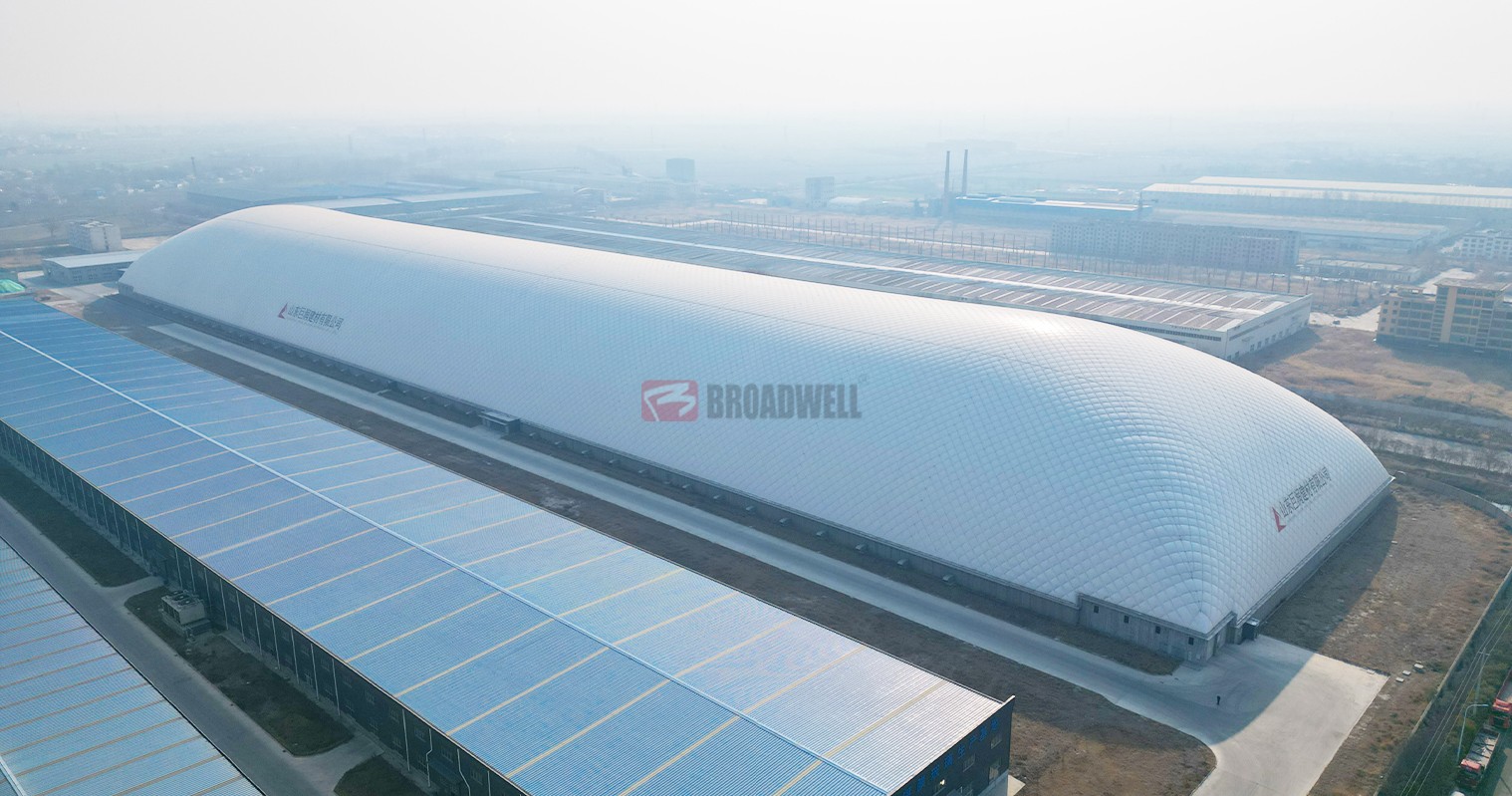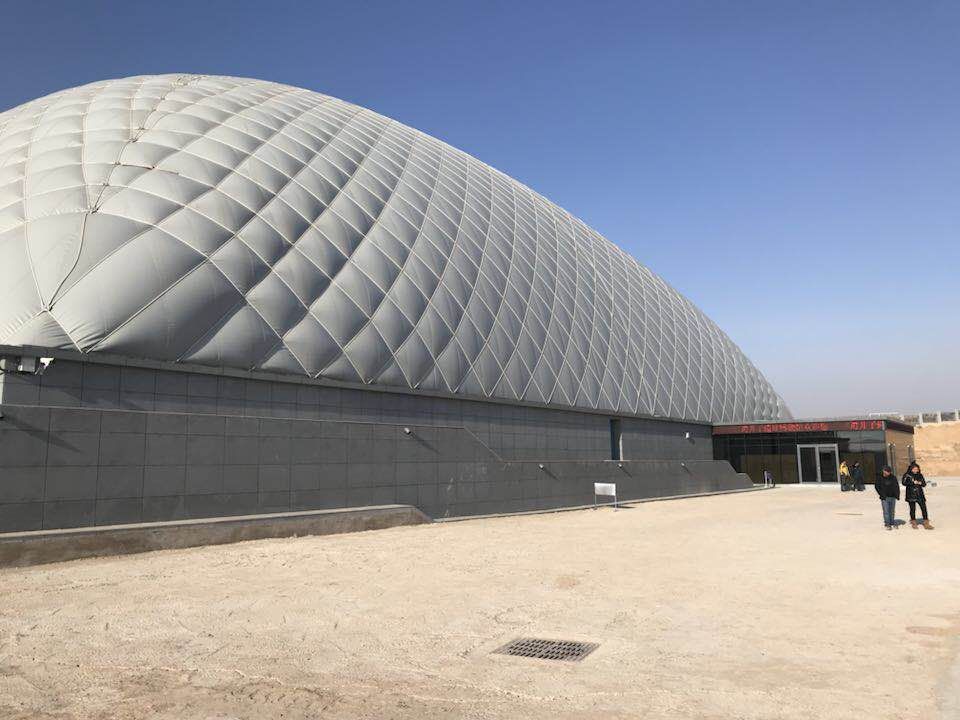News
Site Editor
 Site
/uploads/image/677267645dfcf.png
Discover how agriculture domes provide a controlled environment to protect crops from extreme climates, ensuring food security and sustainability. Learn about their benefits and applications.
Site
/uploads/image/677267645dfcf.png
Discover how agriculture domes provide a controlled environment to protect crops from extreme climates, ensuring food security and sustainability. Learn about their benefits and applications.
Agriculture Domes: A Shield for Crops in Extreme Climates
Views: 2985
Author: Site Editor
Publish Time: 2024-07-31
Origin: Site
As climate change intensifies, agriculture faces unprecedented challenges. Unpredictable weather patterns, severe droughts, and extreme temperatures are increasingly affecting crop yields and food security globally. In response, innovative solutions like agriculture domes are emerging, offering a controlled environment for crops that could revolutionize the way we farm.
Understanding Agriculture Domes
Agriculture domes, also known as greenhouse domes or biodomes, are structures designed to create a stable and controlled microclimate ideal for plant growth. These domes are typically constructed using transparent materials that allow sunlight to penetrate while providing insulation against extreme external conditions. The controlled environment within a dome includes regulated temperature, humidity, and CO2 levels, which are crucial for optimizing plant growth and maximizing yield.

Why Agriculture Domes?
-
Climate Control: One of the primary advantages of agriculture domes is their ability to maintain a consistent internal climate regardless of external weather conditions. This is particularly beneficial in regions experiencing extreme weather patterns, such as heatwaves, cold snaps, or heavy rainfall. By controlling the internal climate, agriculture domes can protect crops from temperature fluctuations that could otherwise be detrimental to their growth.
-
Water Conservation: In many parts of the world, water scarcity is a significant issue. Agriculture domes can help mitigate this problem through efficient water use and recycling systems. By capturing and reusing water, domes reduce the need for external water sources, making them an ideal solution for arid and semi-arid regions.
-
Pest and Disease Management: The enclosed nature of agriculture domes offers a natural barrier against pests and diseases. This reduces the need for chemical pesticides, promoting healthier and more sustainable agricultural practices. Additionally, the controlled environment can be adjusted to create conditions unfavorable to specific pests, further protecting crops.
-
Extended Growing Seasons: Agriculture domes can extend growing seasons by creating optimal conditions year-round. This is particularly advantageous in regions with short growing seasons or harsh winters, allowing for continuous production of fresh produce and reducing dependency on imported foods.
Applications and Innovations
Agriculture domes are versatile and can be tailored to various scales, from small urban farms to large commercial operations. They are also being integrated with cutting-edge technologies such as hydroponics, aquaponics, and vertical farming, which maximize space and resource efficiency. These systems not only enhance crop yields but also reduce the environmental footprint of farming practices.
For instance, in urban areas, agriculture domes can be part of rooftop gardens or community farms, providing fresh produce locally and reducing food miles. In rural and remote regions, domes can help overcome harsh environmental conditions, ensuring food security and supporting local economies.
Case Study: Success in Extreme Climates
In countries like the United Arab Emirates and other Gulf Cooperation Council (GCC) nations, where arid conditions and high temperatures challenge traditional agriculture, agriculture domes have proven to be a viable solution. The controlled environment inside these domes allows for the cultivation of a wide range of crops that would otherwise be impossible to grow in such climates. This not only enhances local food production but also reduces reliance on imports.
Challenges and Future Outlook
Despite their many advantages, agriculture domes are not without challenges. The initial setup cost can be high, which may be a barrier for small-scale farmers. Additionally, maintaining the internal environment requires energy, which can be costly and may contribute to greenhouse gas emissions if not managed sustainably.
However, ongoing research and technological advancements are making agriculture domes more energy-efficient and cost-effective. Innovations such as solar-powered climate control systems and automated monitoring are reducing operational costs and environmental impact.
As the global population continues to grow and climate change accelerates, the importance of resilient and sustainable agricultural practices becomes ever more critical. Agriculture domes represent a promising solution, offering a way to protect crops from extreme climates, conserve resources, and ensure food security for future generations.
In conclusion, while agriculture domes are not a one-size-fits-all solution, they are a powerful tool in the arsenal against the challenges posed by climate change. By providing a stable environment for crop growth, these structures can play a crucial role in the future of sustainable agriculture.









